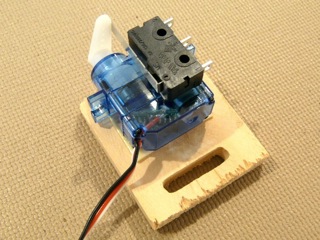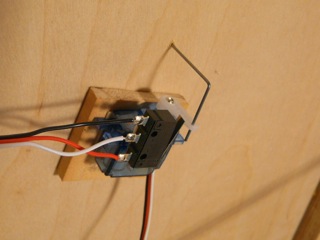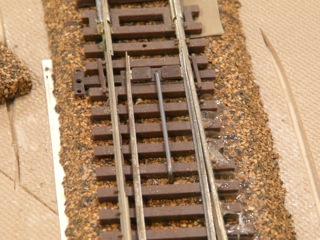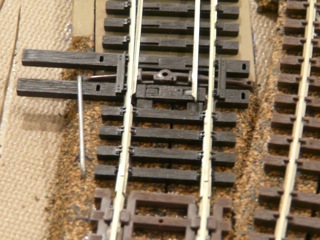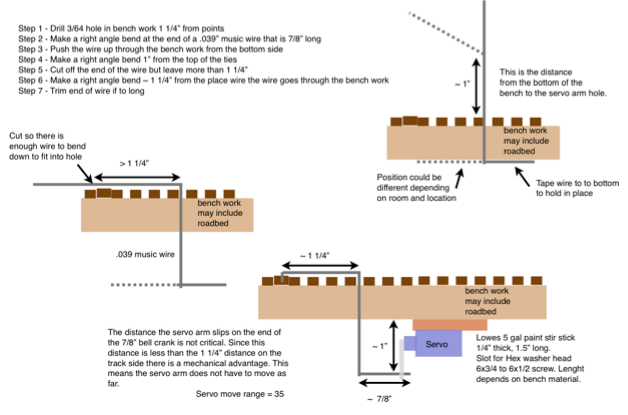Servo Mounting
Servos can be used in a number of applications on a model railroad. Most common is moving turnouts and semaphores. They have also been used to move roundhouse doors, coal shoots in a coaling tower and raise pins in a track to hold cars on an incline. In each case the servo requires some type of mounting to perform the task. For any given task there may be more than one way the servo can be mount. The following is intended to provide ideas for servo mounting.
Very small servos can be located on top of the bench. A piece of .015" music wire was used to connect the servo arm to the turnout and provide spring tension. A hole in the servo arm was enlarged to .046" so one of the servo mounting screws could be used for the music wire eyelet connection. The eyelet was made by wrapping the wire around a .055" drill bit. Electrical connector on these servos only requires a .25" hole in the bench.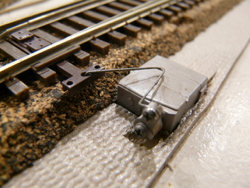
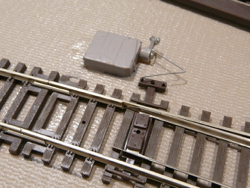
Moving turnout points can be accomplishing in a similar way as with the Tortoise™. A hole is required directly under the points. The servo is attached to the piece of wood with double sided tape.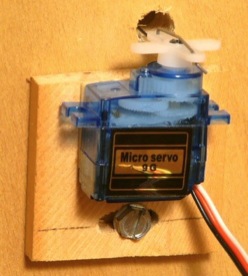
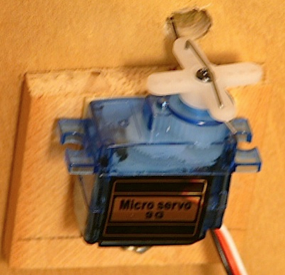
Motrak Models (ebay store) sells a mounting bracket (includes wire and screw) that may be attractive to some.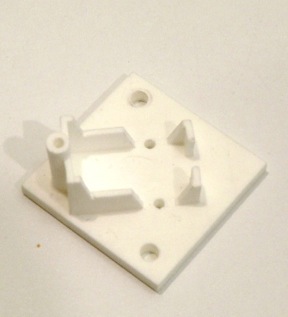
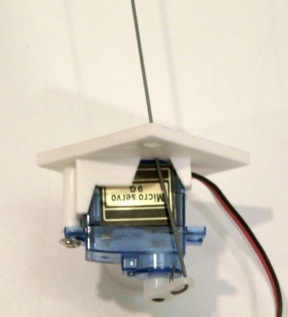
Here is another idea the does not require a hole directly under the turnout points. The servo is attached to the piece of wood with double sided tape. If you need to switch power to the turnout frog a microswitch can be attached to the servo. Attaching the microswitch to the servo with double sided tape can be problematic. A glue such as Goop may be more dependable. It depends on the force to activate the microswitch. If the force is too high the double side tape will allow the microswitch to move over time. A microswitch with a long arm and a low force is DigKey # EG4544-ND. It can be used to power the turnout frog and/or light LEDs. Powering the frog and lighting LEDs at the same time will most likely interfere with block detection of the turnout.